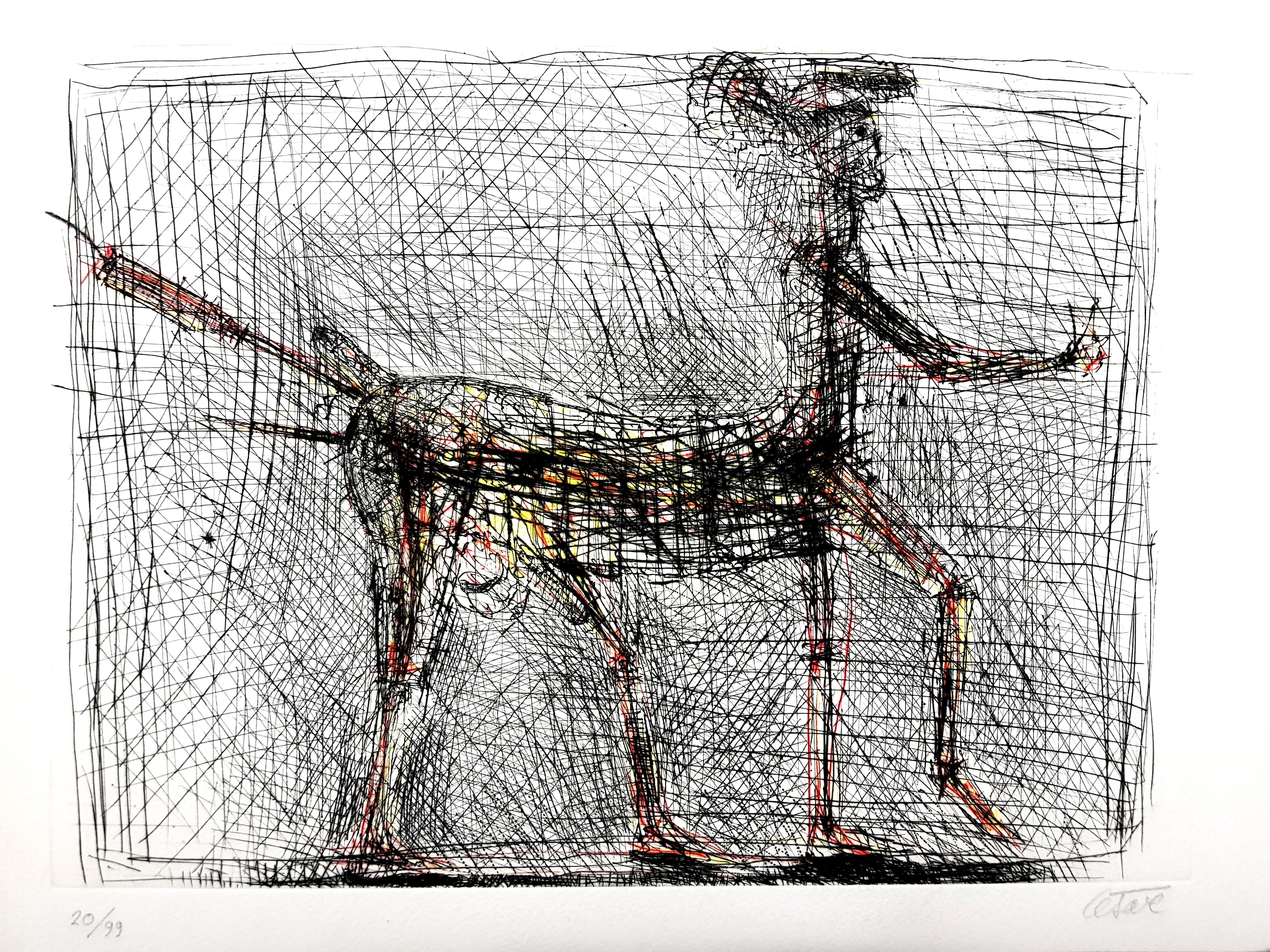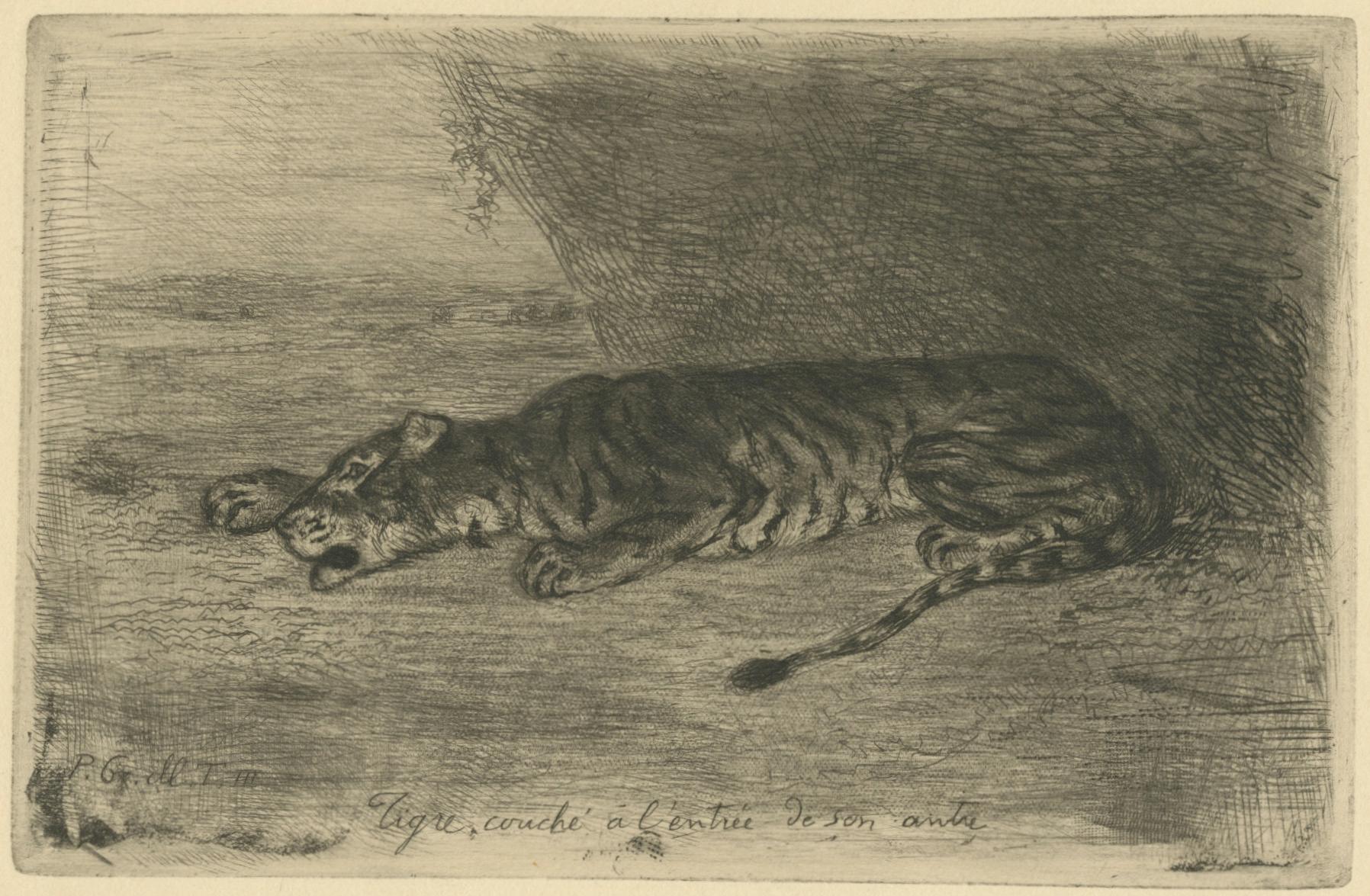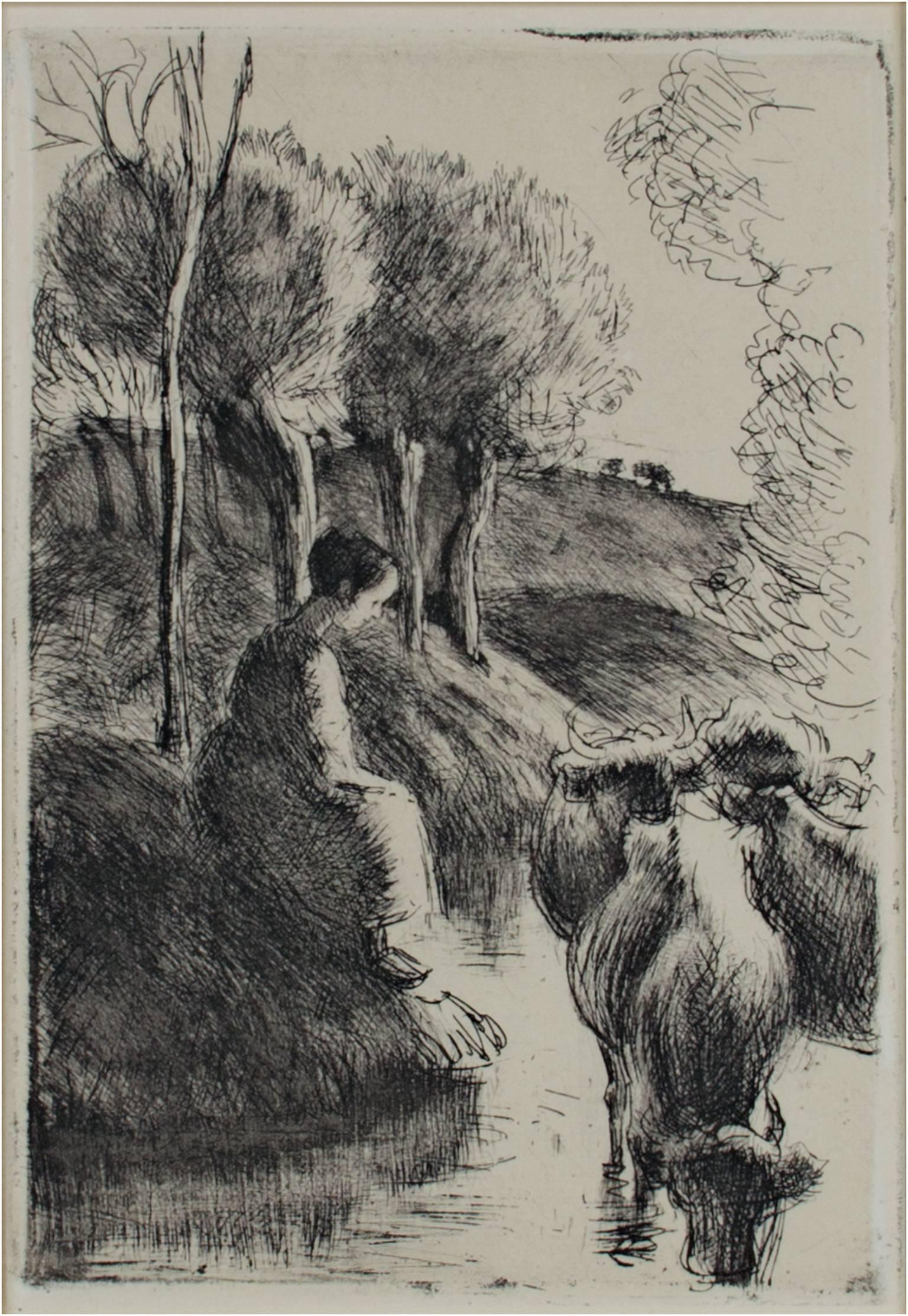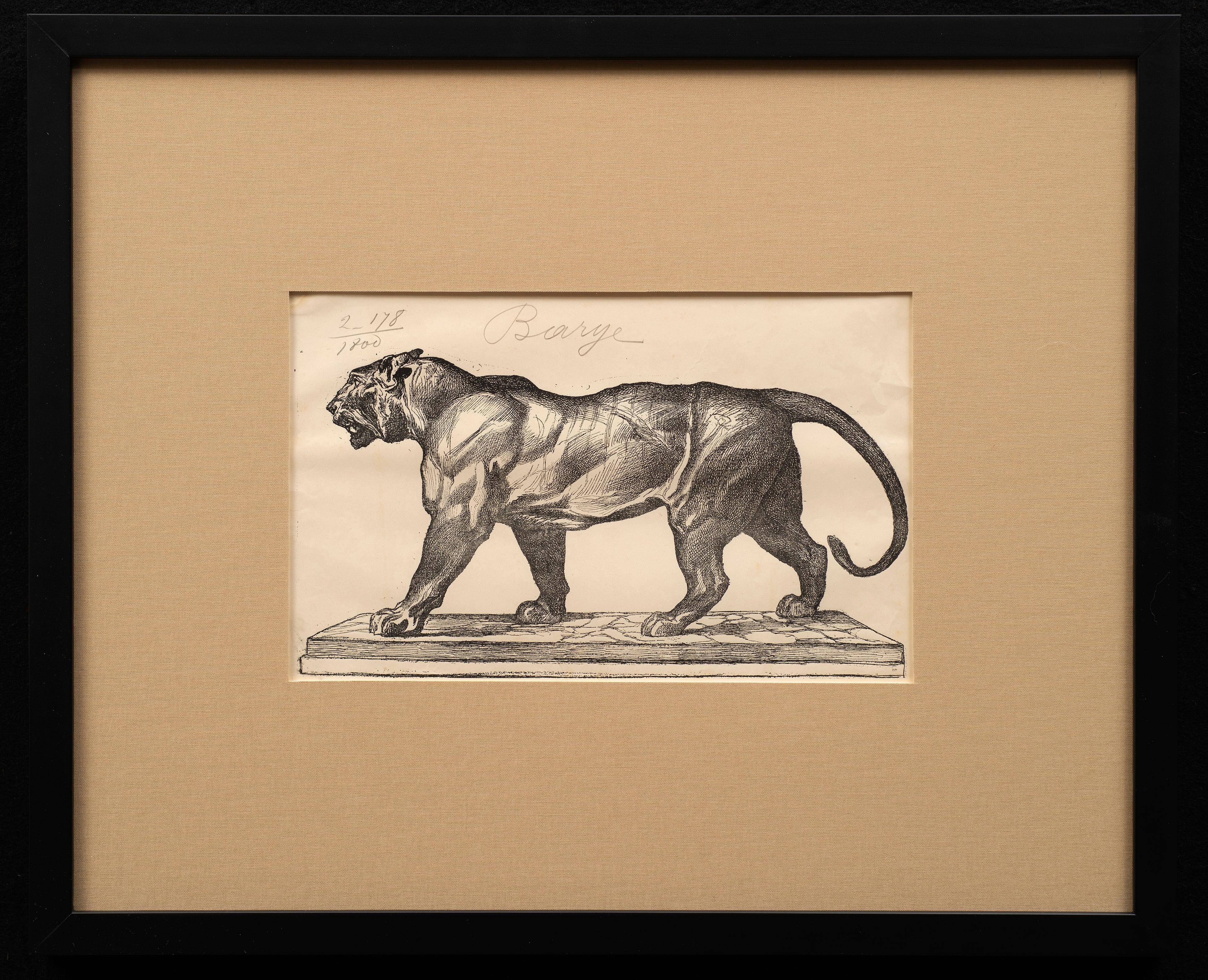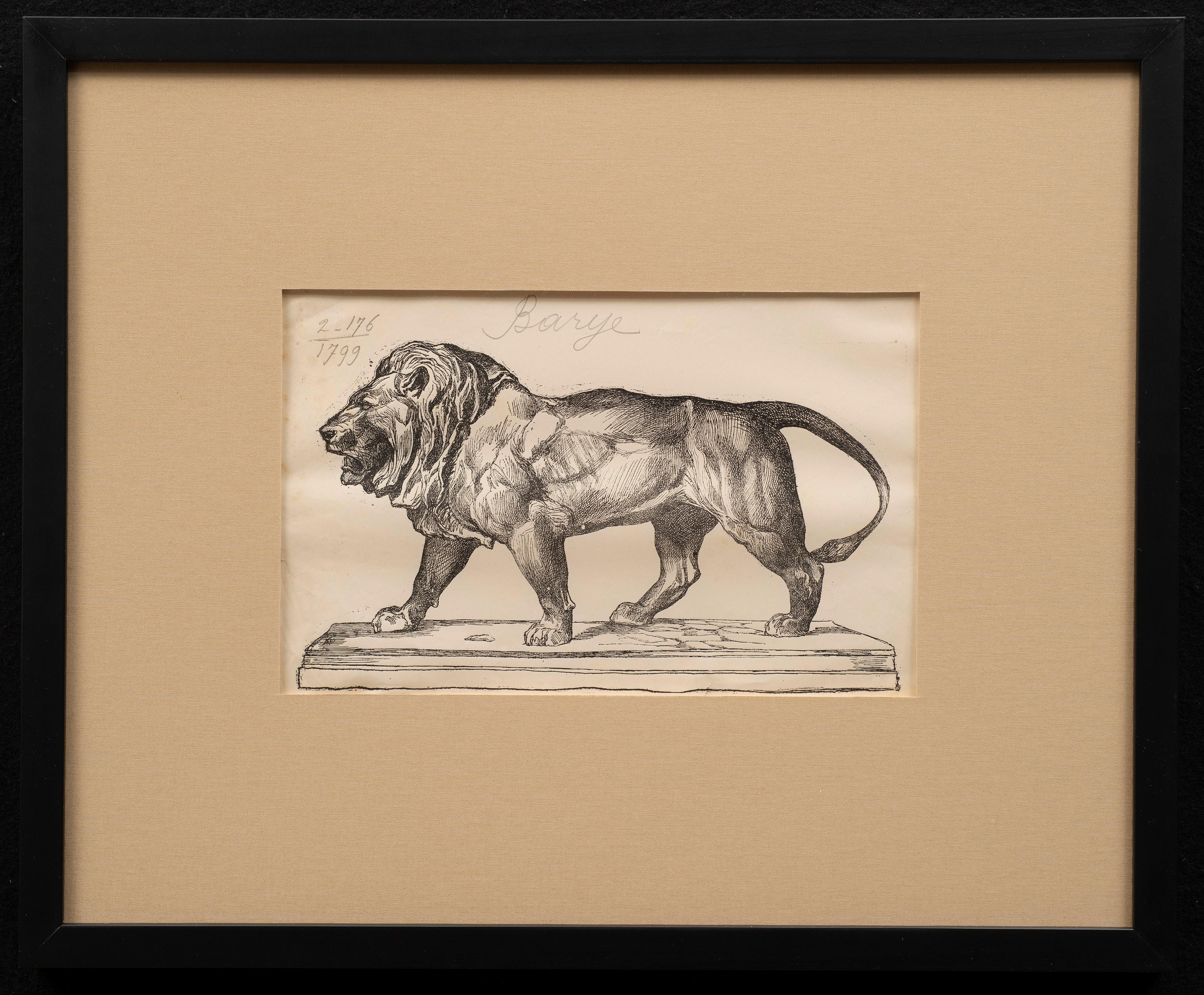Items Similar to 'Foul Rope (Left)' — early American rodeo
Want more images or videos?
Request additional images or videos from the seller
1 of 6
William Robinson Leigh'Foul Rope (Left)' — early American rodeoc. 1920
c. 1920
About the Item
William Robinson Leigh, 'Foul Rope (Left)', etching, c. 1920, edition unknown but small. Signed in pencil. Signed in the plate, lower left. A superb, richly-inked impression, in dark brown ink, on buff wove Umbria paper, the full sheet with margins (1 1/2 to 2 3/4 inches); slight toning at the sheet edges, otherwise in excellent condition. Very scarce.
Image size 14 7/8 x 11 15/16 inches (378 x 303 mm); sheet size 20 3/8 x 15 3/8 inches (518 x 391 mm). Archivally matted to museum standards, unframed.
ABOUT THE ARTIST
Born near Falling Waters, West Virginia on a plantation a year after the Civil War, and raised in Baltimore, William Robinson Leigh (1866 - 1955) became one of the foremost painters of the American West. His career spanning some seventy-five years, Leigh created some of the most iconic depictions of the western landscape, admirers referring to him as ‘The Sagebrush Rembrandt’.
The son of impoverished Southern aristocrats, Leigh took his first art training at age 14 from Hugh Newell at the Maryland Institute where he was regarded as the best student in his class. From 1883 to 1895, he studied in Europe, mainly at the Royal Academy in Munich with Ludwig Loefftz. From 1891 to 1896, he painted six cycloramas or murals in the round, a giant German panorama.
In 1896, Leigh began working as a magazine illustrator in New York City for Scribner's and Collier's Weekly Magazine, and he also painted portraits, landscapes, and genre scenes.
Leigh's trips to the Southwest began in 1906 when he made an agreement with William Simpson, Santa Fe Railway advertising manager, to paint the Grand Canyon in exchange for free transportation West. In 1907, he completed his Grand Canyon painting, which led to more commissions and an extensive painting trip through Arizona and New Mexico. These travels inspired him to paint western subjects for the next 50 years, his primary interest being the Hopi and Navajo Indians.
In 1910, he traveled to Wyoming, where he painted in Yellowstone Park and created sketches, many of which he later converted into large canvases such as ‘Lower Falls of the Yellowstone’ (1915) and ‘Grand Canyon of the Yellowstone’ (1911).
In 1926 he traveled to Africa at the invitation of Carl Akeley for the American Museum of Natural History, and from this experience wrote and illustrated 'Frontiers of Enchantment: An Artist's Adventures in Africa'. In 1933, he wrote and illustrated 'The Western Pony'. His adventures were chronicled in a number of popular magazines including Life, the Saturday Evening Post, and Colliers.
For many years, his work was handled exclusively in New York by Grand Central Art Galleries at the Biltmore Hotel. In 1953 Leigh was elected into the National Academy of Design as an Associate member, becoming a full Academician in 1955.
In March 1999, the Historical Center of Cody, Wyoming, held an exhibition of his field sketches and finished works depicting his experiences near Cody in the early part of the century. These years, between 1910 and 1921, when he often painted in the Carter Mountain vicinity, were considered pivotal to his artistic development and his devotion to the western landscape.
Leigh's work is held in many museum collections of American western art including, the American Museum of Natural History, Arizona State University Art Museum, Buffalo Bill Historical Center (WY), Carnegie Museums of Pittsburg, Desert Caballeros Western Museum (AZ), Eiteljorg Museum of American Indians and Western Art (IN), Farnsworth Art Museum (ME), Gilcrease Museum (Tulsa), Heckscher Museum (NY), Jack S Blanton Museum of Art (University of Texas), Joslyn Art Museum (NE), National Cowboy and Western Heritage Museum (OK), National Gallery of Art, National Museum of Wildlife Art (WY), Oklahoma City Museum of Art, Sangre De Cristo Arts Center (CO), Smithsonian American Art Museum, Springville Museum of Art (UT), The Newark Museum, The University of Arizona Museum of Art, and the Witte Museum (TX).
- Creator:William Robinson Leigh (1866 - 1955, American)
- Creation Year:c. 1920
- Dimensions:Height: 14.88 in (37.8 cm)Width: 11.94 in (30.33 cm)Depth: 0.01 in (0.26 mm)
- Medium:
- Movement & Style:
- Period:
- Condition:
- Gallery Location:Myrtle Beach, SC
- Reference Number:
About the Seller
5.0
Recognized Seller
These prestigious sellers are industry leaders and represent the highest echelon for item quality and design.
Platinum Seller
These expertly vetted sellers are 1stDibs' most experienced sellers and are rated highest by our customers.
Established in 1995
1stDibs seller since 2016
254 sales on 1stDibs
Typical response time: 2 hours
Associations
International Fine Print Dealers Association
- ShippingRetrieving quote...Ships From: Myrtle Beach, SC
- Return PolicyA return for this item may be initiated within 7 days of delivery.
More From This SellerView All
- 'Mazeppa' — 19th-Century French RomanticismBy Jean Louis Andre Theodore GericaultLocated in Myrtle Beach, SCThéodore Géricault and Eugène Lami, 'Mazeppa' from the series 'Oeuvres de Lord Byron', lithograph, 1823, 2nd state of 3, Delteil 94. Rendered by Thé...Category
1820s Romantic Animal Prints
MaterialsLithograph
- 'Horse Attacked by Tiger' — 19th-Century French RomanticismBy Jean Louis Andre Theodore GericaultLocated in Myrtle Beach, SCThéodore Géricault (after), 'Tigre dévorant un cheval' (Tiger Devouring a Horse), lithograph, 3rd state of 3, Clement 97, c. 1820. Lettered 'Volmar ...Category
1820s Romantic Animal Prints
MaterialsLithograph
- Le maréchal flamand (The Flemish Blacksmith) — 19th Century French RomanticismBy Jean Louis Andre Theodore GericaultLocated in Myrtle Beach, SCThéodore Géricault 'Le maréchal flamand' (The Flemish Blacksmith) from the series ‘Etudes, de chevaux lithographiés,’ lithograph, 1822, 2nd state ...Category
1820s Romantic Animal Prints
MaterialsLithograph
- Leucippus Fallax (Buffy Hummingbird) — Original 1849 Hand-colored LithographBy John Gould and Henry Constantine RichterLocated in Myrtle Beach, SCJohn Gould, 'Leucippus Fallax' (Buffy Hummingbird), original lithograph with hand-coloring (not a reproduction), c. 1850. Signed in typeset 'J. Gould and H. C. Richter, del et lith.'...Category
1850s Realist Animal Prints
MaterialsLithograph
- 'Venice, Maria della Salute' — 1930s ImpressionismBy Anton SchutzLocated in Myrtle Beach, SCAnton Schutz, 'Venice, Maria della Salute', etching, c. 1930. Signed and titled in pencil. A superb, richly-inked impression, with skillfully wiped plate tone, on cream wove paper, ...Category
1930s Realist Figurative Prints
MaterialsEtching
- Broadway from the Bowling Green, 1828 — early New York City, hand-coloringLocated in Myrtle Beach, SCJ. R. Hutchinson, 'Broadway from the Bowling Green, 1828', hand-colored etching, 1828. Signed and dated in the plate, beneath the image, lower right. Ann...Category
1820s Realist Figurative Prints
MaterialsEtching
You May Also Like
- César - Centaur - Picasso's Homage - Original Signed EtchingBy César BaldacciniLocated in Collonge Bellerive, Geneve, CHCésar Baldaccini Original Etching Dimensions: 56.5 x 40 cm Signed and Numbered Edition of 99 It is the only original etching ever made by César. César Baldaccini was born in Marseille in 1921. At the age of 12, he left the school to help his father, cooper. At 15 years old, he studied at the Art college of Marseille. He took evening drawing teachings, and then was interested in sculpture until 1939. In 1942, César received a scholarship and went to Paris. He studied ten years at the School of Beaux-Arts; he worked in the studios of Gaumont and Alfred Jeanniot and was named “Grand Massier” (teacher) of this school. At that time, he was living in the same house as Alberto Giacometti. In 1944, short of resources, he went to Marseille, then return to Paris, next year. With the 50s, he made discovered his work through his first exhibitions. One of its works (« The fish ») obtained a place in the Museum of Modern Art in Paris (1955). Henceforth, he exhibited ceaselessly, participating in numerous “Salons” in France and abroad. César received numerous prices there. He got personal exhibitions everywhere (Japan, the United States, Holland, France, Italy, etc.). Important retrospectives came, later. In 1970, he was named professor a foreman to the School of Beaux-Arts in Paris. During his all life, Caesar was stimulated by « the love of the profession » and by an extraordinary will to innovate. The humor of the man did not miss and was noticed through his work. Pablo Picasso was his major reference, also Alberto Giacometti, Germaine Richier, Pablo Gargallo and Julio Gonzales...Category
1980s Realist Animal Prints
MaterialsEtching
- Tigre couché à l'entrée de son antre (Tiger Lying at the Entrance to its Lair)By Eugène DelacroixLocated in Middletown, NYEtching, drypoint, and roulette on watermarked Hallines cream laid paper, 3 3/4 x 5 7/8 inches (95 x 148 mm), full margins. A very good impression of this charming image, with all of...Category
Early 19th Century Realist Animal Prints
MaterialsLaid Paper, Drypoint, Etching
- "Vachere Au Bord de L'Eau, " Etching and Aquatint by Camille PissarroBy Camille PissarroLocated in Milwaukee, WI"Vachere au Bord de L'Eau" is an original etching and aquatint by Camille Pissarro, the 8th state. It can be found in the catalogue raisonne Delteil #93. It features a woman sitting ...Category
1890s Realist Figurative Prints
MaterialsEtching, Aquatint
- Black GeeseBy Winifred AustenLocated in San Francisco, CAThis artwork titled "Black Geese" 1934 is an original color aquatint by noted British artist Winifred Marie Louise Austen, 1876-1964. It is hand signed and titled in pencil by the artist. The image (plate mark) is 9 x 13.75 inches, sheet size is 10.30 x 16.5 inches. Published by Arthur Greatorax LTD, Grafton street, London. It is in excellent condition. About the artist: Born at Ramsgate, Kent on 12 July 1876, Winifred Austen only daughter of Josiah Austin, a Cornish naval surgeon, and his wife Fanny, née Mann. She amended the spelling of her surname from Austin to Austen from the time that she began to exhibit. In 1892 the family moved to Hornsey, London from where Austin attended the London County Council School of Arts and Crafts, studying under Cuthbert Swan, an animal painter. I n 1899 Austen exhibited a picture of a lion at the Royal Academy and in all exhibited more than seventy pictures at the Academy, the last in 1961. She worked in both oils and watercolor but Austen is most highly regarded as an etcher. In all she made some two hundred etched plates, beginning in 1906 with a series entitled The White Heron. She had particular feeling for birds and small mammals, and the naturalist Sir Peter...Category
Mid-20th Century Realist Animal Prints
MaterialsAquatint
- Antoine Louis-Barye "Walking Tiger" Antique Engraving by Firmin Gillot ca. 1870By Antoine-Louis BaryeLocated in SANTA FE, NM"Walking Tiger" Antoine Louis-Barye Antique Engraving by Firmin Gillot Circa. 1870 11 1/3 x 7 3/4 (21 3/8 x 17 1/2 frame) inches This is "Walking Tig...Category
1870s Realist Animal Prints
MaterialsBlack and White
- Antoine Louis-Barye "Walking Lion" Antique Engraving by Firmin Gillot ca. 1870By Antoine-Louis BaryeLocated in SANTA FE, NM"Walking Lion" Antoine Louis-Barye (France, 1775-1895) Antique Engraving by Firmin Gillot Circa. 1870 11 1/3 x 7 3/4 (21 3/8 x 17 1/2 frame) inches This is "Walking Lion," along with "Walking Tiger...Category
1870s Realist Animal Prints
MaterialsBlack and White
Recently Viewed
View AllMore Ways To Browse
Early Converted
Civil War America
Rope Art
Civil War Of America
African American Artists Prints
Rope Handle
American Indian Prints
Prints Of American Indians
The American Civil War
American Indian Art Prints
American Civil War Art Print
Western Etchings
Navajo 1920
1920 Navajo
American Plantation
Texas Etching
50s Sketch
Painting Of Grand Canyon
